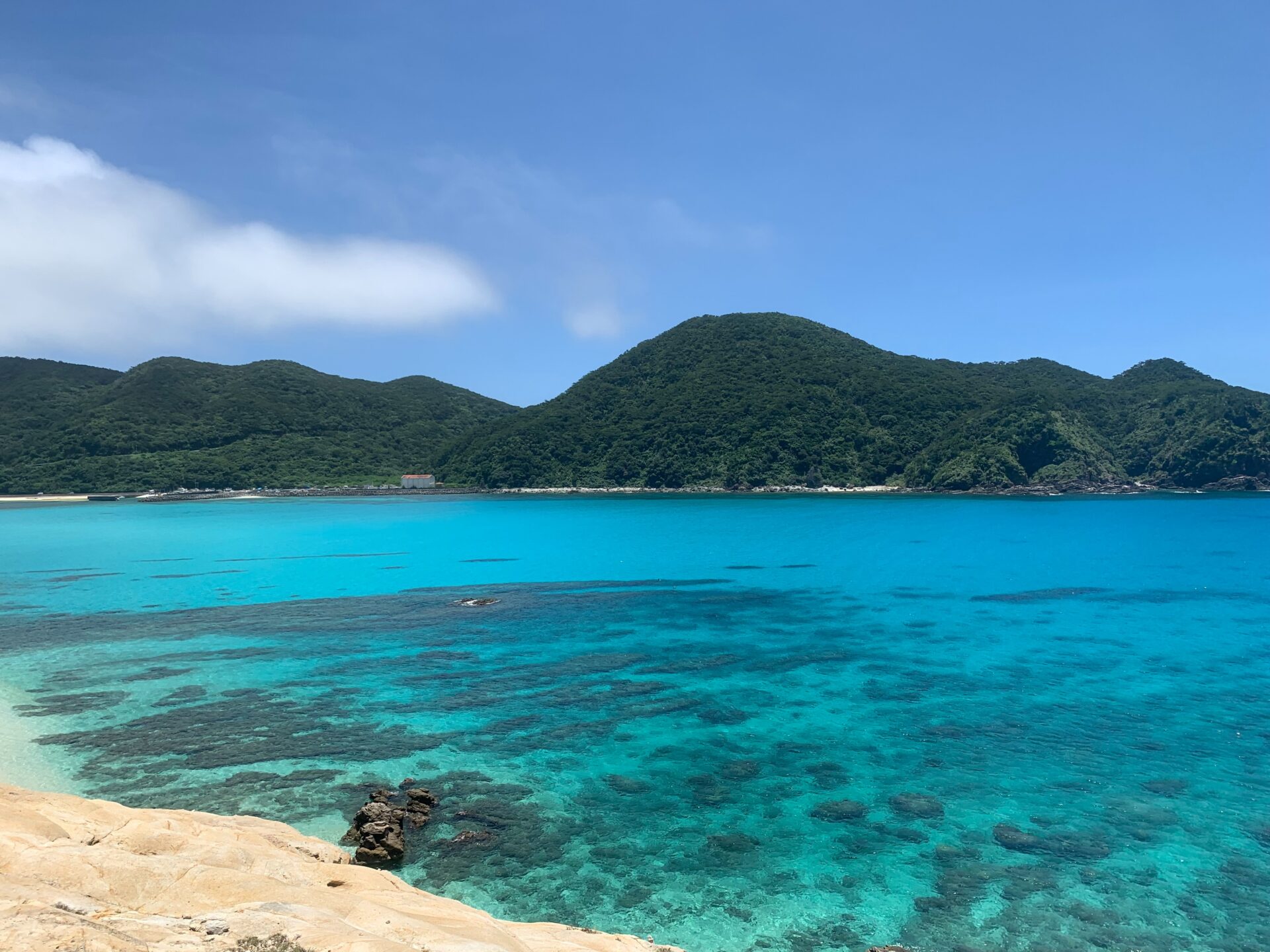Spring brings cherry blossoms, fall comes with wonderfully colored leaves, and the Japanese summer heralds… sweltering heat and high humidity. While the summer in Japan definitely isn’t all bad, as it brings vibrant festivals, tasty summer foods, and a lively atmosphere, the heat can be oppressive. But fear not, as there are many ways to combat the worst of the warmth. Japan has its very own tricks to deal with summer heat, so let us introduce to you how to survive Japanese summer, Japanese-style!
Barley Tea
Barley tea’s bread-like flavor might take some getting used to at first, once you’ve had a cup of cold ‘mugicha’ a few times you’re sure to crave some more. It is refreshing in its own way, and it is proven to help your body fight heat fatigue. Barley tea can, in fact, help with cooling down your core body temperature. So it is no wonder that it is a staple in Japanese households’ fridges, especially in the summer.
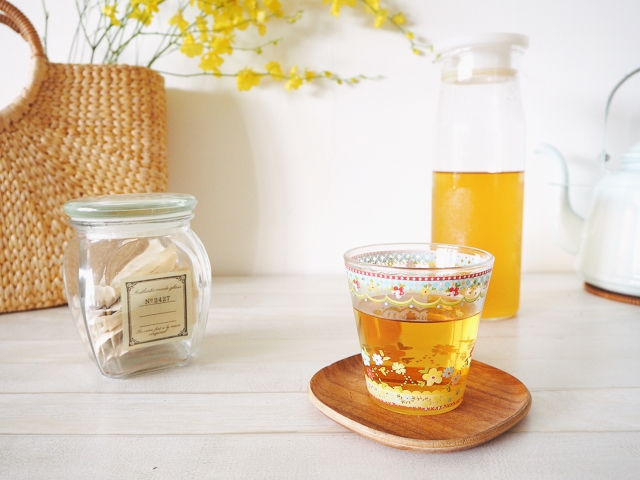
There are other benefits to drinking barley tea as well; besides it not containing any calories and helping to reach or stay at a healthy weight, it has other proven health benefits. It improves blood circulation, helps your liver with detoxing, reduces bloating, and it is rich in antioxidants. The tea can even help you sleep as it contains melatonin! So if you are coming to Japan during the summer, look out for this bottle filled with goodness, barley tea is for sale everywhere from convenience stores to vending machines.
Uchimizu
When you are walking around in any Japanese city or village during summertime, you might notice wet spots in front of shops and restaurants. You might assume that these are due to shopkeepers cleaning their fronts clean, but there is actually a different reason behind this splashing of water. The flushing of shopfront streets with buckets of water is called uchimizu, and it is a custom that dates back to the Edo period.
Uchimizu literally means ‘to strike with water’, and one of the reasons that this is done is to prevent dust from flying around in the street. But another important function of this tradition is cooling down the air. While it literally seems like a drop on a hot plate, if many people do it, this actually helps cool down areas with a lot of concrete and asphalt by a few degrees. This is why the government actively promotes the custom of uchimizu. To make it even more environmentally friendly, they urge people to use recycled or secondary water such as rainwater or water that comes from your air conditioner.
Wind Chime
Soundscape is an important part of enjoying a different environment. There are many distinct sounds that are strongly associated with Japan such as temple bells, the rustling of bamboo forests, and the sounding of the emergency systems’ test songs in the early evening. One sound is especially connected with the summer in Japan, and that is the light tingling sound that the wind chimes make.
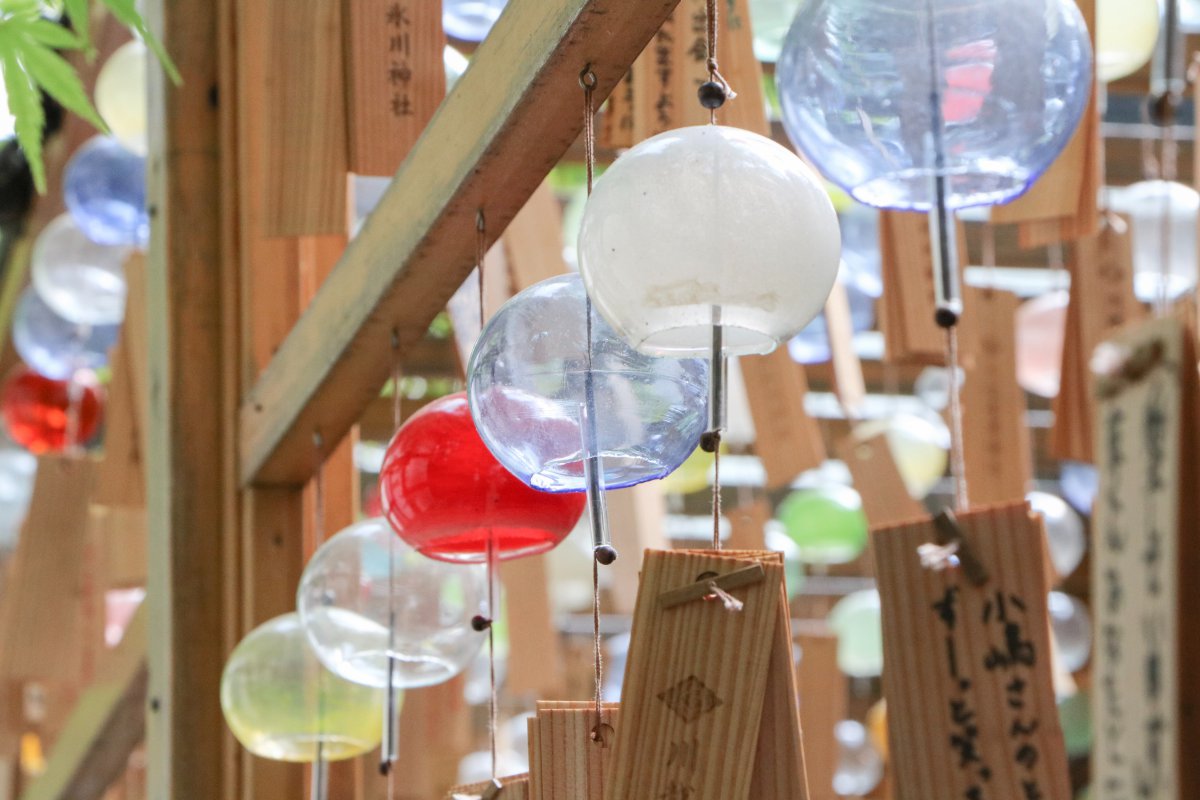
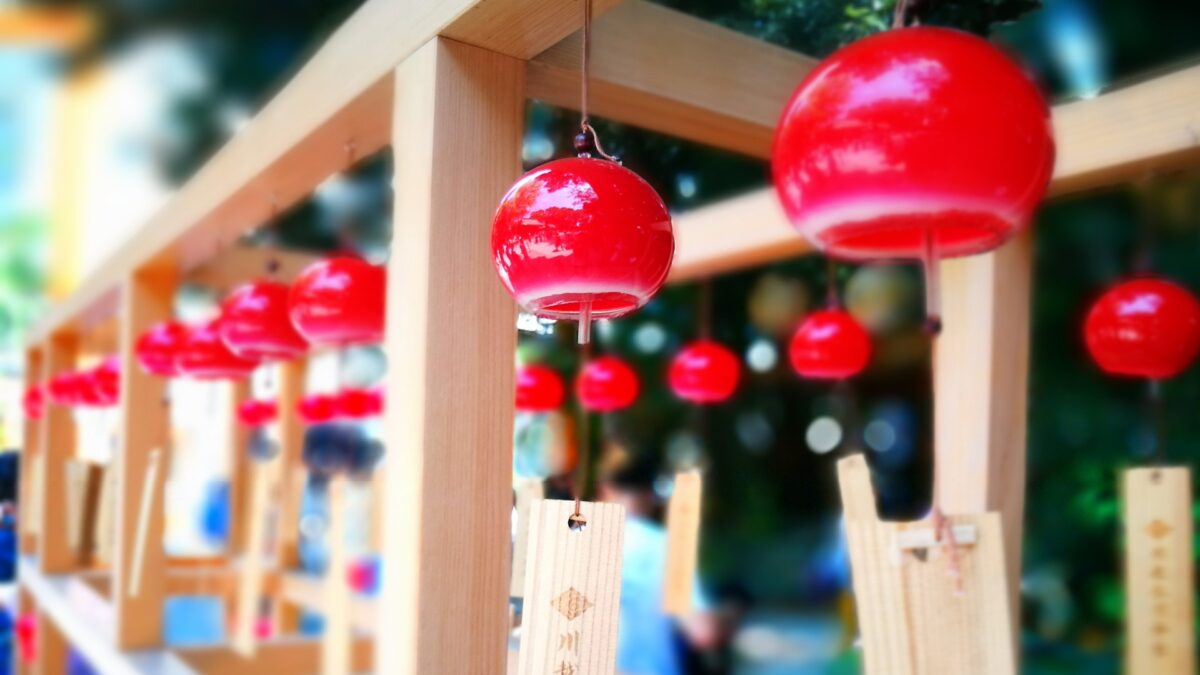
They are called fūrin, and listening to them is not just a pleasure, but it is also supposed to make you feel less warm. The very clear, soft sounds are very relaxing, and the fact that the wind chimes are sounding means that there is a bit of a breeze. Just thinking about this breeze can already cool you down a bit. Fūrin are made of glass and look pretty with their colorful patterns, so they are a nice souvenir to bring home with you. Wind chimes can be bought in some souvenir shops like the Fujiwara Furin Main Shop in Tokyo, and if you are feeling creative you can even make your own during a workshop.
Uchiwa / Sensu
Japanese fans are known all over the world for their effectiveness and beautiful design. Originally they were used to indicate social standing, but these days they are mainly used to keep cool during summer, although fans still play a role in some traditional ceremonies and performances. There are two types of hand fans from Japan, uchiwa and sensu. The uchiwa is a simple fan that is often made with a plastic frame covered with paper, and the sensu is a bit more complex. This fan is usually made of wood and silk, or cheaper materials for low-cost fans.

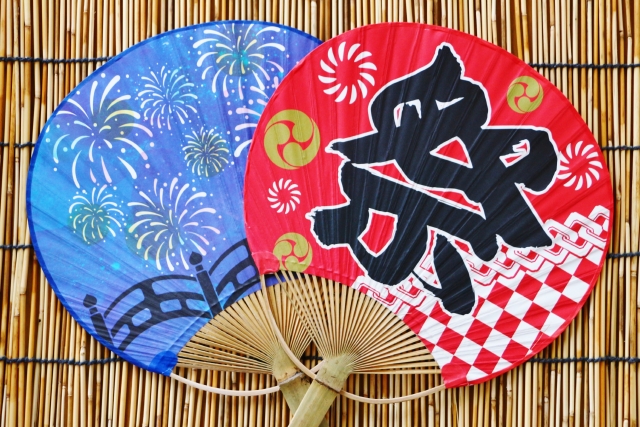
Uchiwa and sensu are very effective in cooling you down immediately, as you don’t have to work hard to create a nice amount of breeze. Especially if you are sweaty, they are very helpful. Uchiwa are often given away for free on the street during summer, the design will contain a commercial in that case. Sensu can be bought in most souvenir stores in Japan, with prices ranging from very cheap to expensive. They can have wonderful designs, and are therefore popular as souvenirs for tourists.
Katori-senko
While the katori-senko doesn’t protect you from getting overheated, it does protect you from another summer hazard: mosquitoes! As temperatures go up, the number of mosquitoes also increases. Especially in the evening, there can be quite a few of them. And this is when katori-senko comes to the rescue, as it is still nice to be able to sit outside and enjoy the balmy summer nights in Japan.

Katori-senko is a type of incense that originated in Japan and became popular in many other countries for its long effectiveness. Its coil shape makes a katori-senko able to burn for as long as 7 hours, killing insects that come within the smoke’s reach. Because of the ingenious shape, they don’t fall over, and of course the smoke is safe for humans and animals. The smell is easy to recognize, and many people associate it with nice summer evenings spent outside.
A pig shaped incense holder is very common to use in Japan, it’s the iconic feature of Japanese summer.
Shaved Ice
This colorful sweet treat is an all-time summer favorite among Japanese kids and adults. Called kakigori in Japanese, shaved ice is for sale everywhere during the hot summer months. It comes in flavors such as strawberry, melon, and grapes, and eating this summer indulgence is a surefire way to help you cool down. You can find kakigori stands in parks, traditional parts of town, and outdoor attractions, and they are easy to recognize by their flags with a red kanji with a blue background.

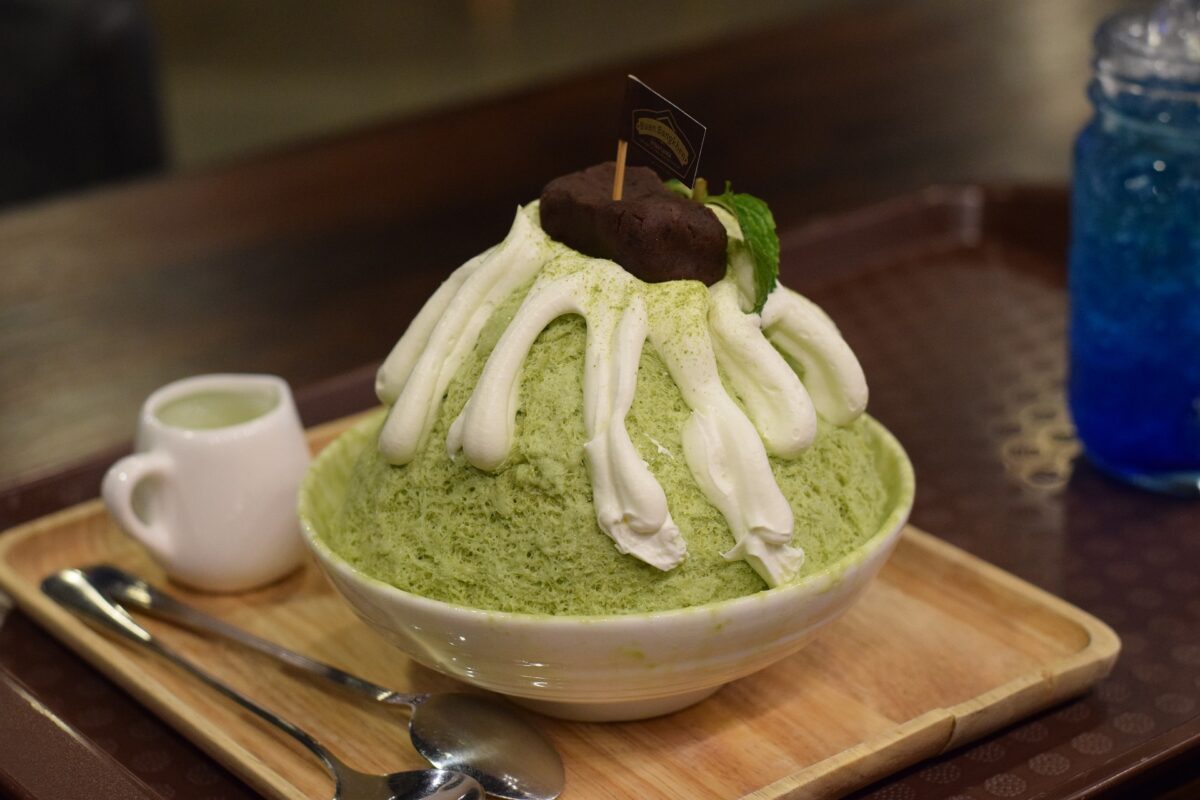
If you want to eat a slightly more fancy version of shaved ice, many specialist cafes have amazing upgraded desserts available. They often come in more traditional flavors like green tea, and have mochi (rice cake) and red beans on the side. These little pieces of art are also very pretty to look at, so taking a picture before you dig in is recommended!
Sudare
The Japanese partitions made of bamboo called sudare have a very long history. They were already used in the homes of the Japanese aristocracy in the 9th century in order to make their dwellings more hospitable. Bamboo used to be rare and expensive, so sudare were exclusively for the rich. Nowadays, sudare can be produced cheaply, and they became popular throughout the world for their heat-fighting properties and stylish look.
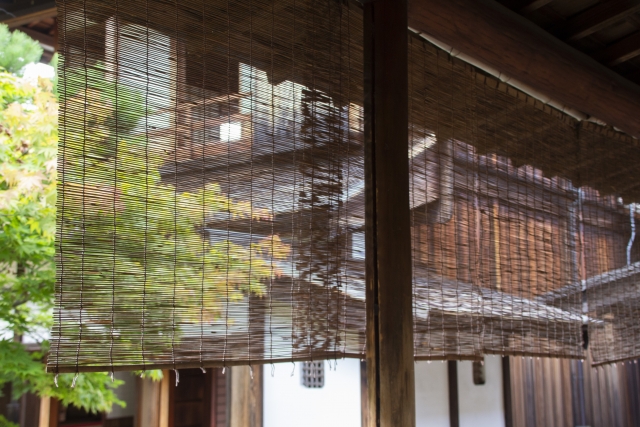
In Japan, sudare are used to protect open spaces of the home such as verandas from rain, insects, and most importantly, direct sunlight. The fact that the sunlight is kept out while a breeze can still pass through the narrow openings and past the light structure makes sudare very effective in keeping the home cool. Sudare are usually hung up by the start of the summer and taken down again when it gets cooler in the fall. As you only see them during the summer, they give people a strong feeling that summer has arrived.
Nagashi Somen
As you probably know, many noodles like ramen are supposed to be enjoyed while they are still scorching hot. But did you know that in Japan, people also enjoy cold noodles especially during the summer? One of the best examples of this is nagashi somen, or ‘flowing noodles’. In order to let the noodles float by you like they are in a river, they build a kind of a bamboo scaffolding through which the noodles flow. You sit next to the noodle river with your chopsticks and catch them when they float by you. Then you dip them in the provided salty sauce, and dig in!
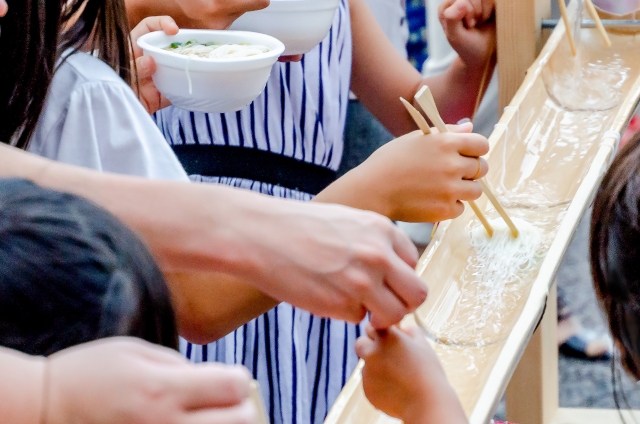
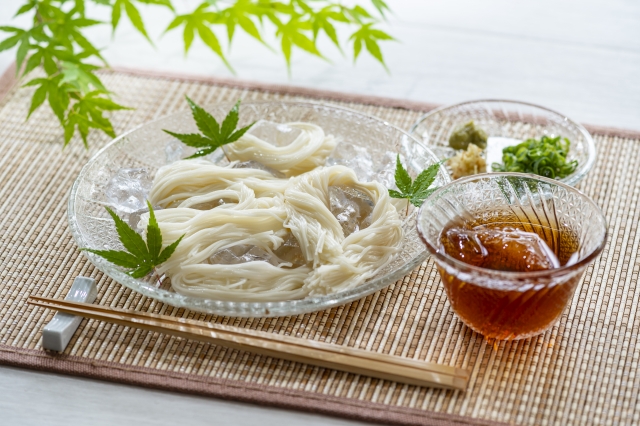
It is super fun and delicious too, so why not give it a try when you are in Japan during the summer? This is a typical summer outdoor activity and you won’t find it in central Tokyo, so it is a good excuse to go and discover the more rural side of Japan. Near Tokyo, you can find nagashi somen in Chayakado in Kamakura. We also arrange private tours in Kamakura, so if you’d like to stop by during your tour just let us know and the guide will arrange a visit.
Summer Wagashi (mizu-yokan, tokoroten)
Wagashi are traditional Japanese sweets, and besides looking like little pieces of art, they are also delicious! The summer versions of wagashi are very light and refreshing and can definitely help in cooling you down. Two summer wagashi you should definitely try are mizu-yokan and tokoroten.

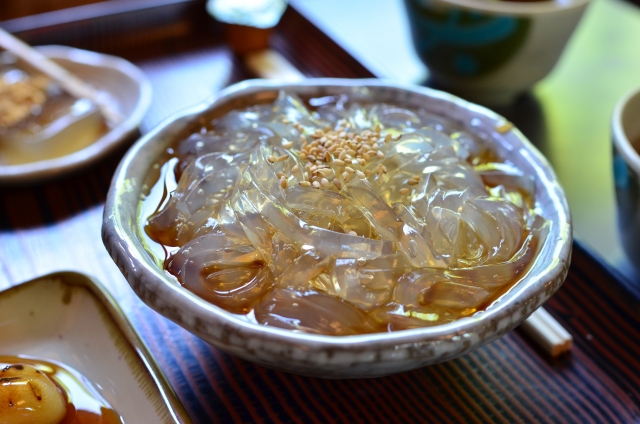
Mizu-yokan is a chilled version of yokan, which is a small red bean flavored jelly. Because it contains more water than the regular yokan, mizu-yokan is softer and more smooth. Tokoroten is a food based on seaweed that has been eaten in Japan for many centuries which can be eaten hot or cold. When it is cold, it has the consistency of jelly and feels very refreshing. It can be flavored with different flavorings like sesame and soy sauce.
Straw Hat
One of the most important things when it is hot is to protect your head from the sun. Wearing a hat is therefore one of the more obvious choices to combat summer heat. In Japan, straw hats or amigasa have been a head cover of choice for a long time. In popular culture, you can see samurai, ninja, and even anime characters wear a straw hat. Ninja even used it as a way to disguise themselves and blend in, as travelers used to wear straw hats to protect themselves from the sun.
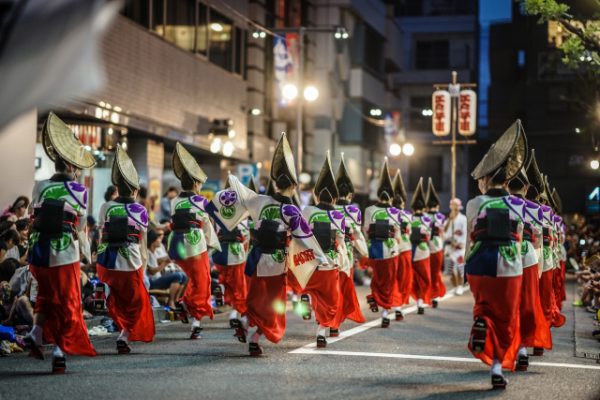
You can also see Japanese festival dancers wear amigasa often during the summer. One of the most famous examples of this is the Awa Odori festival, in which large groups of dancers wear straw hats as a part of their costume.
Yukata
If you go to a Japanese summer festival, you will see 90% of people are dressed in very colorful kimono. These are not regular silk kimono as they can be a bit restrictive and too hot to wear during the summer, but they are yukata which are made of cotton or synthetic material. The yukata is a special summer kimono that is light and comfortable to wear during the hot summer. Yukata originally means ‘bathrobe’, as it is also worn when you walk around a hot spring area but it also became a casual summer kimono.
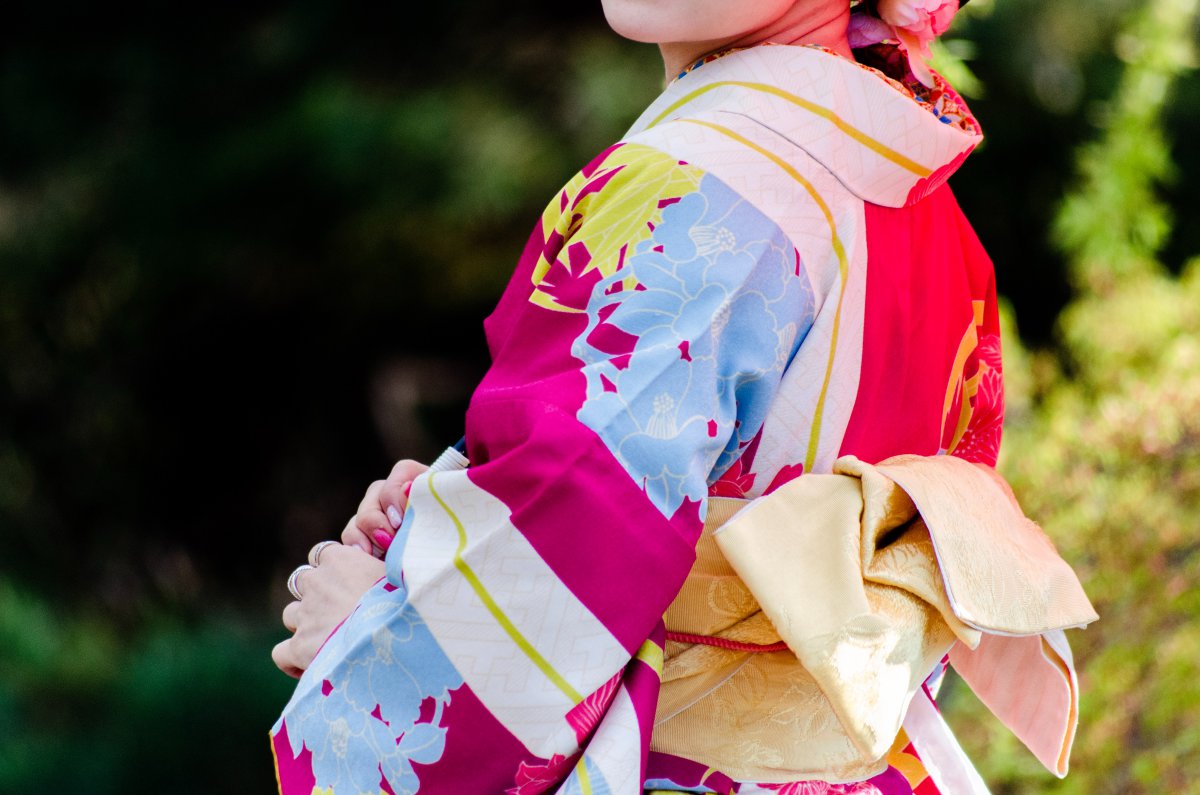
Even nowadays, it is still customary to wear yukata during summer events and when you visit a tourist destination. Because of the pretty and colorful patterns, they look very nice in pictures. You can buy them quite cheap in places that are popular with tourists like Asakusa in Tokyo, and you can also rent them for just a few hours.
▶Best places for renting a kimono
Traveling during the Japanese Summer
Summer is a nice time to travel to Japan, in spite of the heat. As you can see, there are many things you can do to cool yourself down a bit while you enjoy your trip in Japan. If you really want to get the most out of it you can do one or more private tours, and your guide will be happy to create a program where you make optimal use of the day, also during the summer. You can, for example, opt for a half day tour
▶Tokyo Half Day Walking Tour
▶Tokyo 1- Day Highlights Private Walking Tour (8 Hours)
Follow us on Instagram, Facebook and Twitter for more travel inspiration. Or tag us to get featured!
Happy travelling!
Other articles you might enjoy




Stefanie Akkerman moved from the Netherlands to Japan in 2013 with her Japanese husband and son. She jumped into the niche of Dutch tour guiding in Tokyo and Kamakura in 2015 and occasionally writes articles about all the great sights and activities Japan has to offer. She loves (Japanese) food, and to work that all off she goes diving, snorkeling, cycling, or hiking.
This post may contain some affiliate links. When you click through and make a purchase we may receive some commission, at no extra costs to you.


